Archive for 2024
First Transcontinental Phone Call
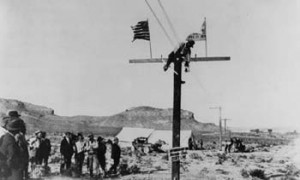 July 29, 1914
July 29, 1914
The first test call is made on the newly completed transcontinental telephone line, taking place between New York and San Francisco. The last pole was erected and the line completed two days earlier on July 27th, but commercial service did not start until January 25th of the next year. The sixth month delay was due to AT&T’s wish to publicize the service in conjunction with San Francisco’s 1915 World Fair.
IBM’s First Desktop Computer
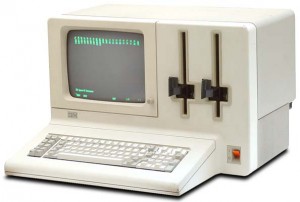 July 28, 1981
July 28, 1981
IBM introduces their System/23 Datamaster desktop computer, only two weeks before they introduce their IBM PC. Geared towards small business for use as a word processor and data processor, the computer was designed to be set up by end-users without the need of a computer specialist. While now a footnote in history, the importance of the Datamaster is that many of the team members that developed it were re-assigned to the secret IBM PC project. Much of the knowledge they acquired working on the Datamaster went into developing the IBM PC as quickly as possible. For example, the choice of the Intel 8088 processor in the IBM PC was based on the team’s familiarity with the similar Intel 8085 processor used in the Datamaster.
Microsoft Buys Full Rights to 86-DOS
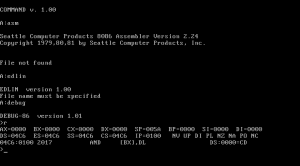 July 27, 1981
July 27, 1981
About two weeks before IBM begins shipping the first IBM PC, Microsoft buys the full rights to the operating system 86-DOS, formerly known as QDOS (Quick and Dirty Operating System), from Seattle Computer Products for $50,000. Microsoft had previously paid $25,000 to SCP for a non-exclusive license in December 1980 in order to begin porting the operating system to the IBM PC, which used the Intel 8088 processor. Microsoft renamed 86-DOS to MS-DOS and licensed it to IBM as PC-DOS. SCP would later sue Microsoft claiming fraud because Microsoft did not reveal IBM as a licensee. The case was settled in SCP’s favor for 1 million dollars, a fraction of the annual revenue Microsoft was receiving from MS-DOS and PC-DOS.
World’s First Geosynchronous Satellite
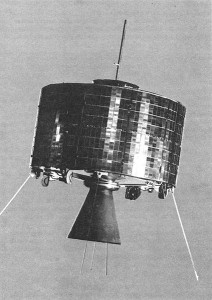 July 26, 1963
July 26, 1963
Syncom 2, the world’s first geosynchronous satellite, is launched. Syncom 1 was intended to be the first geosynchronous satellite, but an electronics failure rendered the satellite inoperable during the ascent to orbit.
Sirius and XM Merger Approved
First Launch from Cape Canaveral
 July 24, 1950
July 24, 1950
The first successful rocket launch occurs at Cape Canaveral. The rocket, Bumper 8, was a captured German V-2 modified with a US Army Corporal second stage.
Cape Canaveral’s location in the southeast is an ideal site for rocket launches in the United States. By launching eastward, rockets are able to take advantage of the linear velocity of the Earth’s rotation. This velocity is greatest towards the equator, making the southern United States preferable. And by launching towards the ocean, away from populated areas, safety downrange from the launch is maximized in case of problems.
Commodore Amiga Introduced
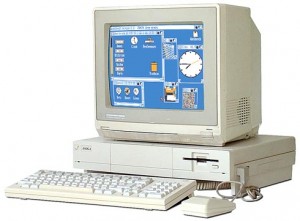 July 23, 1985
July 23, 1985
Commodore introduces its Amiga personal computer, also known as the Amiga 1000 or A1000. Featuring a multitasking, windowed operating system, color graphics, and stereo sound among other features ahead of its time, the Amiga developed a loyal user following that remained strong even as the PC market became increasingly consolidated between the dominant IBM-compatible PCs and Apple Macintosh computers.
In 1994, Byte Magazine would write, “The Amiga was so far ahead of its time that almost nobody — including Commodore’s marketing department — could fully articulate what it was all about. Today, it’s obvious the Amiga was the first multimedia computer, but in those days it was derided as a game machine because few people grasped the importance of advanced graphics, sound, and video.”
First Ford Model A Sold
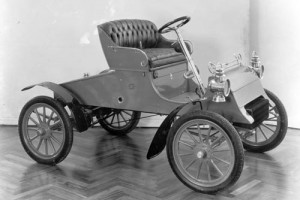 July 23, 1903
July 23, 1903
Ford sells its first Model A car to Ernst Pfenning of Chicago, Illinois. This was Henry Ford’s 3rd attempt at creating a company that manufactured cars, incorporating just over a month earlier. The initial $28,000 investment was down to $300 before this first Model A was sold. However, it was the Model T that solidified Ford’s standing in automotive history.
The Unholy Alliance is Born
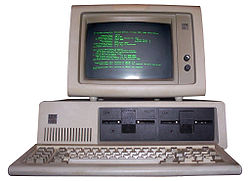 July 22, 1980
July 22, 1980
Representatives from an IBM facility in Boca Raton, Florida, where a small group of engineers were secretly developing the IBM PC, meet with Bill Gates and Steve Ballmer of Microsoft to discuss licensing software and an operating system for the still-developing PC. Not having an operating system to offer IBM, Microsoft will eventually buy the rights to QDOS/86-DOS from Seattle Computing Products, which they in-turn license to IBM as PC-DOS, and later license to PC clone makers as MS-DOS. This alliance between IBM and Microsoft forms one of the most dominant platforms in the history of computing, which goes on to crush nearly all other PC platforms in the 80’s and 90’s. Ironically this platform nearly crushes IBM itself as they lost control of the platform to PC clone makers and Microsoft.
Apple Introduces iBook Laptop
 July 21, 1999
July 21, 1999
Apple introduces the iBook laptop, the first mainstream computer designed and sold with built-in wireless networking.

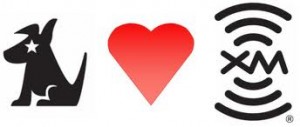 July 25, 2008
July 25, 2008